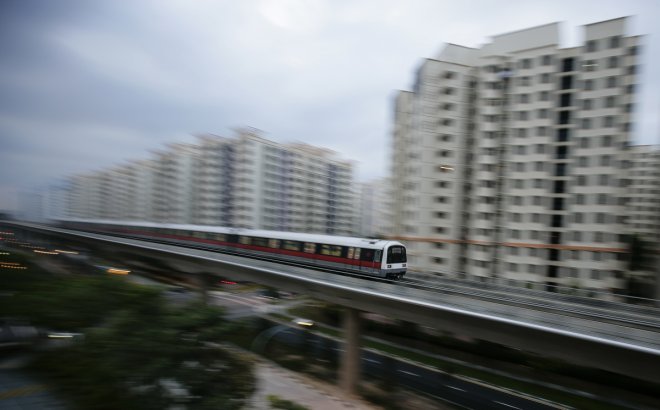
The collision between two trains at the Joo Koon Station on Wednesday, November 15, took place as a software protection feature was disabled, said Land Transport Authority (LTA) after preliminary investigation. The mishap led to injuries of 23 passengers and 2 SMRT staff, who were rushed to Ng Teng Fong Hospital and National University Hospital.
The accident occurred when a train heading towards Tuas Link Station stopped at about 8.18 am at Joo Koon to detrain passengers, owing to a fault in its signaling system. A minute later, a second train halted behind it, following the accurate distance to be maintained between two trains. However, the second train was activated by the faulty signaling system and hit the first one before it could move forward.
"Thales (the French company which supplied the new signaling system), LTA and SMRT are investigating the accident," said the official statement. According to primary findings, the fault in the signaling system made the six-car first train register as a three-car one, thereby misjudging the distance and causing the collision.
LTA says Thales has confirmed that the signaling systems, both old and new, are safely working now. the authorities also informed that trains will be subjected to additional security measures and manual checking to ensure such accidents do not happen again.
Reportedly, trains from Joo Koon to Tuas Link will not run on Thursday, November 16 due to security checking. Bus services will be provided for the stretch. Authorities have urged drivers to be more alert, even when trains are running in automated mode.
SMRT Trains' senior vice president of rail operations for the North-South and East-West Lines (NSEWL), Alvin Kek, has said that rail operators will increase the time between the trains' arrival at NSEWL stations to 2.5 or three minutes, which is now at two minutes. He also added that there was no indication of human involvement in the accident and the signaling software protection got removed "inadvertently", reports The Online Citizen.
An investigation is now being conducted into whether the driver could have overridden the signaling software and applied the manual brake. "10.7 metres away is relatively close, the movement before coming into contact with the first train took only 10 seconds. The driver can override the system, and apply the manual brake, but he didn't. It is now subject to the investigation, said Kek.
Thales representative Peter Tawn says that their software is completely safe and this is the first such an incident has occurred on their watch. Authorities have assured that the safety of commuters is their topmost priority.








